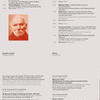Refugees: The displacement of civilian populations in the Europe of the Great War - 1914-1918
The international conference "Refugees: The displacement of civilian populations in the Europe of the Great War - 1914-1918" is taking place from 4 to 6 November 2015 in Rovereto (Trento) with the participation of Italian and foreign scholars and researchers.

The Provincia Autonoma di Trento is dedicating the end of the Great War Centenary’s second year to the topic of refugees, with a special project between late October and early November 2015. The project will incorporate three different initiatives based in Rovereto - the second city of Trentino - which was completely evacuated during the war.
Over 100 000 people were displaced during the First World War, forced from their homes into the interiors of Austria and Italy. To honour their stories and experiences, the project will release a two-volume publication entitled The Displaced: Refugees, Flüchtlinge, Uprchlíci 1914-1919, as well as an exhibition of photographs, artefacts and documents about refugees from Trentino, and an international conference on the forced displacement of populations in Europe due to war.
The project is sponsored and supported by the Provincia Autonoma di Trento and curated by some of the main institutions dedicated to history in all its forms: the Department of Humanities of the University of Trento, the Italian War History Museum, the Historical Museum of Trentino, the History Laboratory of Rovereto, the Rovereto Academy of the Agiati, Fondazione Bruno Kessler and the Civic Museum of Rovereto.
Here are details of the three planned events:
The publication of "THE DISPLACED: REFUGEES, FLÜCHTLINGE, UPRCHLÍCI 1914-1919" by the History laboratory of Rovereto
The publication, produced by the History Laboratory of Rovereto with the Presidency of the Provincial Council of Trento and the Italian War History Museum, reconstructs the experience of about 100 000Trentini who were forcibly removed from their homes near the front and sent northwards (70 000 from Tyrol to Bohemia) and southwards (30 000 from Veneto to Sicily) by the two armies at different times between 1915 and 1916. They were only able to return after the war to villages reduced to "a heap of stones and lime".
A story from long ago, rarely studied and narrated and never celebrated, just like that of millions of other refugees that the First World War recorded in its tragic accounts.
The publication gathers the results of years of research by an extensive network of collaborators. It consists of two volumes. The first (Photography. Writing) was edited by the History Laboratory of Rovereto and features art by Giancarlo Stefanati. It is built on the vast repertoire of photographs and memories that the refugees brought home as evidence of their long suffering, which were uncovered during the research. In the second (History), Paolo Malni, the wise historian from Gorizia, provides an overview of the two exiles into the lands of Austria and Italy for the first time. An essay by Michele Smargiassi, photography historian, introduces them both.
Exhibition "THE DISPLACED: REFUGEES, FLÜCHTLINGE, UPRCHLÍCI 1914-1919": 4 November 2015 - 28 February 2015 The exhibition, which bears the same title as the publication, will be opened in Rovereto’s Palazzo Alberti-Poja, one of the branches of the Civic Museum, on Tuesday November 3 2015. It is open from 4 November to 28 February 2016.
It will be managed by the History Laboratory of Rovereto, in collaboration with the Civic Museum Foundation in Rovereto, the Italian War History Museum (which coordinates the Rete Trentino Grande Guerra) and the Cultural Activities Service of the Provincia Autonoma di Trento. The exhibition is by the architect Giovanni Marzari and the artwork by Giancarlo Stefanati.
The exhibition tells the story of refugees from Trentino in the First World War through photos, diary entries, letters, maps, specially-created tables, paintings, along with memories from notebooks, postcards and pages of crumpled letters (there are even letters written on tree bark), as well as chests, the registers of refugee camps, and objects brought back by refugees from their exile.
A map on the forced displacement of populations in Europe during the First World War, developed by researchers at the University of Trento, will depict the phenomenon of refugees at a continental scale for the first time. These events from the First World War rapidly assumed an unprecedented massive scale, yet they have been endlessly repeated from the twentieth century until today, as evidenced by the news of recent months.
The exhibition will remain open until 28 February 2016; hours: Tuesday to Sunday from 9.00 to 12.00 and from 15.00 to 18.00. Closed on 1 November, 25 December and 1 January. Admission is free. Paid guided tours are available for adults and schools.
After closing, in February, a streamlined version of the exhibition will be set up in other towns on request for organisations and associations.
International conference "REFUGEES: THE DISPLACEMENT OF CIVILIAN POPULATIONS IN THE EUROPE OF THE GREAT WAR - 1914-1918"
An international conference will be held in Rovereto (TN) from 4-6 November 2015 in the Conference Room of the Mart - Museum of Modern and Contemporary Art, sponsored by the Department of Humanities of the University of Trento, the Italian War History Museum, the Historical Museum of Trentino, the History Laboratory of Rovereto, the Rovereto Academy of the Agiati, and Fondazione Bruno Kessler, with the support of the Provincia Autonoma di Trento.
Even the limited movements of the fronts during the First World War generated waves of refugees who, for the first time, had to be managed by the involved states as part of a general political problem. Pushed back by the advance of the enemy armies, forcibly evacuated by national armies demanding full availability of the territory and suspected of unpatriotic attitudes, the people who lived on the fronts of the Great War were moved en masse. This forced the states to devise management systems for the problem to stop a civilian crisis becoming a humanitarian tragedy. The solutions adopted - and the effects they caused for the people involved - were varied and their efficiency is much debated. These issues will be examined by some of the leading historians in the field at the international conference in Rovereto.
The programme will examine the situation of refugees in Serbia, Russia, Romania, Lithuania, France, Italy, Austria, Slovenia and Galicia.
But not only the history of one hundred years ago is of interest to the conference. A central theme will be how the figure of the refugee/asylum-seeker has found a legal form in the last century. The refugee, in fact, losing their relationship with their territory, loses many of their rights as a citizen, and is exposed to all forms of violence and abuse.
The Great War, which is constantly revealing new aspects of its character, also nurtured reflection on this unexpected protagonist of the conflict - the refugee - destined to dominate the opening scene of conflicts throughout the twentieth century until present day.
The conference will conclude with a roundtable discussion entitled 1915-2015: A Century of Humanitarian Crises.
Source: www.trentinograndeguerra.it
Click to see the PROGRAMME of the conference.
How to attend the conference
Free entrance to be booked by Email: comunicazione@museodellaguerra.it, writing name, surname and the day/s chosen for attendance.
INFO
Museo Storico Italiano della Guerra
via Castelbarco 7, Rovereto TN – Italia
+39 0464 438100
comunicazione@museodellaguerra.it
www.museodellaguerra.it
organization: Italian war history Museum - Rovereto




